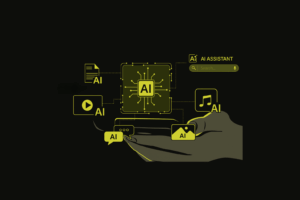Author: Dominik Thiele, Solution Architect Enterprise Service Management at handz.on GmbH
When operating an IT Service Management System, there are a number of pitfalls that can jeopardize its successful implementation
If a company’s IT service is to be able to react faster and better to incidents, it needs a good knowledge database. Specialist processes can then be embedded in a technical framework and subsequently run in a standardized manner. The means for setting up and operating such a database is an IT service management (ITSM) system. However, many companies still make the mistake of leaving it at its implementation stage and not continuously adapting and improving ITSM in day-to-day operations. This negligence during operation is the main reason why many ITSM projects come to a halt halfway through. The following article lists the „most popular“ mistakes that are made.
ITIL (Information Technology Infrastructure Library) is a best practice framework for IT Service Management. Continuous improvement is a discipline in its own right and is regarded as a key success factor in trimming an ITSM system for efficiency. While only the project team is usually involved in its implementation, many more employees and specialist departments suddenly access the system once it goes live. Naturally, they want to see their individual work processes mapped in the tool. They therefore bring their requirements to the attention of the project team in order to articulate their need for adaptation or optimization.
Companies ignore their employees‘ feedback
If a company does not take employee feedback into account, the motivation of users to continue providing input on how the tool could ideally be further improved is close to zero. The project team that was involved in the implementation is often disbanded. This means that there is no central point of contact for customizing and improvements, and these are no longer carried out. The result: continuous improvement falls into a deep sleep.
Savings are made on training
Let’s be honest: who likes going to a software course? If in doubt, the manual will certainly help, or the program can’t be so difficult that you can’t understand it that way. This is an opinion that can be found again and again and is driven by the fear of spending too much money on expensive training courses and workshops. The hope is that employees will come up with their own workarounds. And any errors that still occur will simply have to be accepted – after all, what technology runs 100% smoothly?
Inadequate training, especially in the start-up phase, is indeed one of the biggest pitfalls for the success of the new system. It is often seen as purely a matter for the IT partners who offer and sell such training. Development and project teams that sit down with the users, actively explain individual application examples on the tool, answer questions and thus make the advantages of the tool visible? This is often dismissed as superfluous. If a feature is really so important for improving everyday working life, then the software can hardly be designed in such a way that it is not obvious and understandable. What would the software manufacturer gain from this?
However, if you do without initial training and an ongoing training program for the solution – especially on usability topics – and do not set up a platform where employees can ask questions, your ITSM project risks failing quickly.
Static ITSM instead of further development
Every company evolves and introduces new work processes and services over time. Companies often start by mapping their incident management via ITSM and gradually expand the tool with additional services until the entire service landscape is mapped in line with the ITIL discipline of service portfolio management.
When new services are optimally embedded in the existing solution, this is known as continuous improvement. The opposite would be a static system that is constantly supplemented with „quick & dirty“ workarounds in order to somehow reflect individualities. There is no continuous further development and maintenance. The ITSM then becomes obsolete faster than a new generation of processors comes onto the market.
No monitoring, no performance management
In order to closely monitor how well the ITSM tool is performing, whether tickets are being left too long, whether SLAs are being broken and where the levers for optimization lie, the system must be monitored – especially in disciplines with an external impact on customers (e.g. service request and incident management). ITSM tools offer many opportunities to identify problems within the company. Monitoring is essential in order to utilize them. Those who underestimate this are depriving themselves of an important control instrument.
Data integrity and data security
ITSM systems work with large volumes of data. These grow the more disciplines the company maps via the ITSM software. If data integrity and security are not at the top of the priority list, security gaps can quickly arise. Particularly in areas such as contract management (contract data) or ticketing as a customer contact point for emails, PDFs, etc., there are numerous data protection risks lurking that the tool itself cannot intercept. These include user errors such as clicking on malware links in emails or inadvertently sending personal data.
So if you want to risk a lack of data security seeping into the ITSM sphere, all you have to do is make sure that no training courses are held for employees to sensitize them to the issue of data protection. The best weapon against data protection problems – users who know exactly how to handle the system – would therefore be a blunt sword.
Conclusion
With the Implementing an ITSM system is not the end of the story. Because the secret to the success of an efficient ITSM solution lies largely in the time after implementation and in handling the system in daily business. However, if a company spares itself the effort of continuously developing the software, training and an active ITSM project team, it will not be able to exploit the full potential of the system or enjoy its many benefits.



